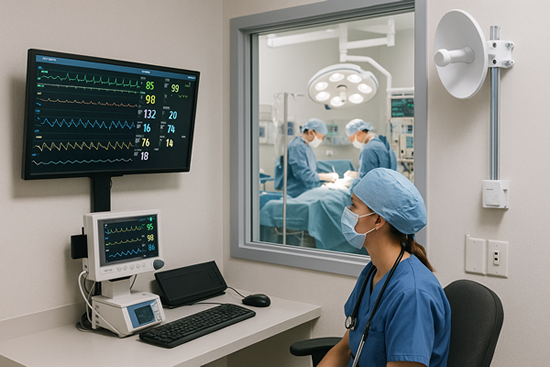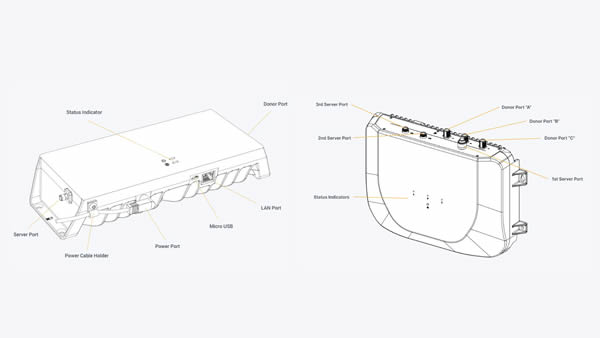How Poor Mobile Signal Disrupts Education

Mobile connectivity has become a critical pillar of modern education, impacting everything from safeguarding to digital learning. However, many educational institutions still suffer from poor indoor mobile signal and the consequences go far beyond minor inconvenience. Weak reception can have a direct impact on student safety, staff productivity and the overall learning experience. The Hidden Impact of Weak Signal in Schools Many schools, academies and higher education campuses experience poor indoor mobile coverage due to thick building materials, large campuses, or rural locations. This leads to “dead zones” in classrooms, corridors, basements and other hard-to-reach areas, creating real challenges in daily operations. Some of the main issues caused by poor signal include: 1. Compromised Communication Patchy mobile signal can prevent staff from communicating effectively, especially in time-sensitive situations. Whether it’s coordinating between departments or responding to an emergency, weak signal delays response times and puts strain on safeguarding procedures. 2. Risk to Safeguarding and Security When mobile devices can’t connect to the network, essential safeguarding protocols may be compromised. Emergency alerts, mobile access to student data, or staff messaging apps become unreliable, an unacceptable risk in any modern educational environment. 3. Disrupted Digital Learning Tech-enabled learning is now a core part of education. Cloud-based platforms, online resources and mobile devices are all key teaching tools but they rely on stable mobile data connections. Without it, lessons are interrupted, teachers are frustrated and students miss out on quality learning experiences. 4. Administrative Inefficiencies School admin teams also depend on reliable mobile signal to access cloud systems, staff portals and communication tools. Poor connectivity slows down day-to-day tasks, affects collaboration and reduces overall operational efficiency. 5. Disconnected Parents In today’s always-on world, parents expect fast, reliable updates from their child’s school. Patchy signal limits your ability to communicate effectively, whether it’s attendance alerts, emergency messages or day-to-day engagement. The bottom line? Poor mobile signal leads to disrupted learning, operational inefficiency and reputational damage for your institution. How Our Indoor Mobile Signal Boosters Can Help At Rapid Wireless, we provide professional indoor mobile signal booster systems, designed specifically for the education sector. Our Ofcom-compliant installations enhance mobile coverage across all major UK networks, eliminating blackspots and ensuring consistent signal throughout your site. Whether you’re managing a single-building primary school or a multi-site university campus, our tailored solutions can help you: Future-Proof Your Campus Today Don’t let poor mobile signal hold your institution back. Speak to our team to discover a bespoke mobile signal booster solution that keeps your school, college, or university connected, secure and ready for the future.
Lifelines of Connectivity: How Wireless Telecoms Are Powering Modern UK Healthcare

From remote clinics to inner-city hospitals, the UK’s healthcare system is evolving rapidly and reliable, secure wireless connectivity is now as essential as the clinical equipment used inside. At Rapid Wireless, we provide specialist wireless telecommunications solutions that enable NHS Trusts, private healthcare providers, care homes and emergency services to operate with confidence, clarity and speed. Healthcare’s Growing Demand for Wireless Connectivity Healthcare is increasingly dependent on digital systems, whether it’s for real-time patient monitoring, medical imaging transfers, electronic health records, or mobile diagnostics. Yet these systems are only as effective as the networks that support them. Modern healthcare environments require: Without a robust telecommunications backbone, everything from critical care to outpatient services can be compromised. Our Wireless Telecom Solutions for Healthcare At Rapid Wireless, we design and deliver wireless infrastructure tailored to healthcare needs, including: Private 5G Networks: Dedicated wireless networks that ensure fast, secure communications across hospital estates and field units, with no reliance on public cellular infrastructure. Wi-Fi Backhaul & Access Point Integration: Ensuring seamless connectivity for hospital staff, visitors, and connected devices across wards, operating theatres, and outdoor areas. Point-to-Point Microwave Links: High-bandwidth, low-latency connections between hospital campuses, data centres, or remote clinics, especially useful where fibre isn’t feasible. Temporary Connectivity Solutions: Deployable comms for pop-up testing sites, vaccination hubs, or mobile clinics – perfect for public health emergencies. Resilient Infrastructure for Emergency Services: Support for ambulance networks, patient transfer units and command centres with high-reliability wireless coverage. Why Wireless Matters in Healthcare Wireless telecommunications play a crucial role in improving patient outcomes by enabling real-time data transmission, so clinicians can make faster and more informed decisions at the point of care. They also enhance operational efficiency, as wireless mobility supports quicker patient admissions, more effective diagnostics and smoother coordination across departments. In times of crisis, such as cyberattacks or natural disasters, a resilient wireless network ensures that critical healthcare services remain functional and accessible. As healthcare facilities evolve into smart hospitals, wireless infrastructure becomes essential to support connected medical devices, IoT systems and AI-powered diagnostics. Speak to us… If you’re involved in healthcare infrastructure, IT planning, or service delivery, talk to us about how our wireless telecom solutions can enhance your care environment. We’re committed to connecting healthcare safely and intelligently.
Powering the Digital Classroom: How Wireless Telecoms Are Transforming UK Education

The landscape of education in the UK is changing fast. With blended learning models, connected classrooms and smart campuses becoming the norm, seamless wireless communication is now essential for effective teaching and learning. At Rapid Wireless, we specialise in delivering reliable, scalable and secure wireless telecom solutions to schools, colleges and universities across the country. The New Connectivity Standard in Education Modern education depends on connectivity – not just for students and staff, but also for the technologies that power a smart, secure and interactive learning environment. However, legacy networks and patchy coverage can hold institutions back. Key challenges include ensuring reliable coverage across large or historic campuses, supporting a growing number of connected devices and protecting networks from cyber threats, all while staying within public sector budgets. Our Solutions: Campus-Wide Wi-Fi and Wireless Backhaul: We design and deploy high-capacity Wi-Fi networks that ensure consistent access throughout classrooms, libraries, lecture halls and outdoor learning spaces. Point-to-Point and Point-to-Multipoint Microwave Links: Ideal for multi-site colleges or university estates, these links deliver fast and secure connections between buildings without the need for fibre trenching. Private 5G Networks: Custom wireless networks provide secure, high-performance connectivity for education authorities and institutions that require dedicated bandwidth and mobility. Temporary or Rapid Deployment Solutions: We offer fast deployment kits for temporary classrooms, exam centres, or overflow accommodation during term-time peaks. Secure Network Design and Integration: All our systems are built to meet UK education sector IT compliance standards, with robust cyber protection and device management capabilities. Cellular mobile signal boosting: Ideal for improving coverage in modern, signal-resistant school buildings and in schools located in rural or remote areas. Let’s Connect Education At Rapid Wireless, we believe that every learner deserves fast, secure access to digital resources and every educator needs the tools to deliver it. Whether you’re looking to upgrade your campus network or expand connectivity across multiple sites, we’re ready to help. Get in touch today to learn how our wireless telecoms solutions can help your institution achieve more.
G41 vs G43 Cellular Coverage: What’s the difference and which one is right for you?

When it comes to improving mobile signal indoors, choosing the right solution makes all the difference. Two popular options on the market are the G41 and the G43, offering powerful ways to boost mobile coverage, but they’re built for slightly different use cases. Here’s a quick breakdown of the key differences and benefits of each. G41: High-Performance for multi-carrier coverage The G41 is designed for environments where strong, reliable coverage is essential across multiple mobile networks. It supports up to four carriers simultaneously, making it ideal for offices, commercial spaces, and shared buildings where users are likely to be on different networks. It automatically adapts to the strongest available signal and ensures a seamless user experience across the board. Key benefits: – Supports multiple networks at once – High gain and coverage area – Ideal for medium to large commercial environments – Intelligent signal optimisation G43: Focused Coverage with Daisy-Chain Expansion The G43 is a newer solution built for flexibility and scalability. While it supports fewer carriers at a time (typically up to two), it stands out with its daisy-chain capability, allowing units to be linked together for extended coverage across complex layouts or larger buildings. It’s a great fit for businesses that need targeted coverage in specific zones or structured deployments over multiple floors. Key benefits: – Expandable coverage using daisy-chaining – Compact and discreet hardware – Suitable for structured or phased deployments – Cost-effective for targeted signal enhancement Which one should you choose? If you need broad, simultaneous multi-network coverage in a single, centralised system, the G41 is the better fit. If you’re after flexibility and targeted deployment with room to scale, the G43 could be the smarter choice. If you’re struggling with weak mobile coverage in your building, our team is here to help. We can advise on the right solution, whether it’s the G41, G43, or another system entirely based on your needs, layout and connectivity goals. Get in touch today to find out how we can improve your mobile signal and keep your team connected.

